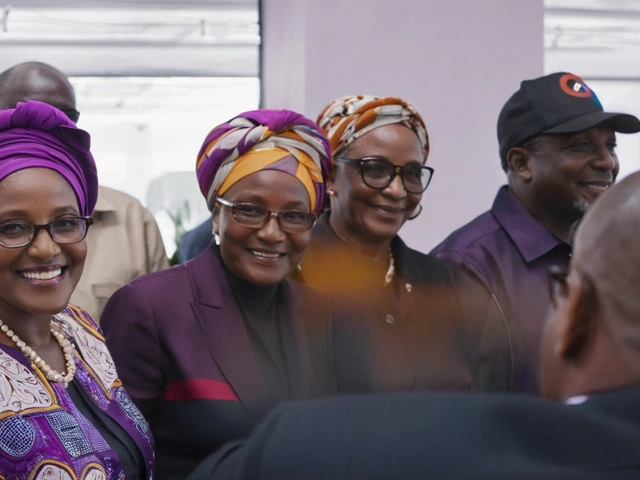Kathryn Bigelow's Nuclear Thriller "A House of Dynamite" Shines at Venice
Kathryn Bigelow's nuclear thriller "A House of Dynamite" debuts at Venice, earns a Golden Lion nod, and sparks debate on U.S. crisis response.
When you think of high-stakes war films that feel like you’re in the middle of the chaos, you’re probably thinking of Kathryn Bigelow, an American film director known for her visceral, documentary-style storytelling and groundbreaking achievements as a woman in a male-dominated industry. Also known as the first woman to win the Academy Award for Best Director, she didn’t just break glass ceilings—she rebuilt the rules of how action and war stories are told on screen. Her films aren’t just about explosions or heroics. They’re about pressure, fear, and the quiet decisions that change lives.
Bigelow’s work connects deeply with real events and real people. The Hurt Locker, a 2008 film about a U.S. Army bomb disposal team in Iraq won her the Oscar and six others, including Best Picture. It wasn’t flashy. It didn’t glorify war. It made you feel every heartbeat in the silence before a detonation. Then came Zero Dark Thirty, a tense, meticulously researched account of the hunt for Osama bin Laden. Critics called it controversial. Audiences called it gripping. She didn’t take sides—she showed the cost of the chase.
What makes her different? She doesn’t rely on slow-motion heroics or music cues to tell you how to feel. She lets the situation breathe. Her camera stays close. Her actors sound like real people under stress. You don’t watch her films—you survive them with the characters. That’s why her work stands out in a sea of overproduced blockbusters. She doesn’t just direct action; she directs truth.
Her influence stretches beyond the screen. She’s inspired a generation of filmmakers—especially women—to take control of the camera and tell stories that matter, not just sell tickets. You won’t find her on talk shows promoting her next project. You’ll find her on set, in the field, making sure every frame has weight.
Below, you’ll find articles that touch on the themes she’s shaped: war, justice, power, and the human edge. Some cover real events she turned into cinema. Others look at how her style changed how stories are told today. Whether you’re a film student, a history buff, or just someone who wants to know what real tension looks like on screen, this collection gives you the context behind the headlines—and the quiet genius behind them.
Kathryn Bigelow's nuclear thriller "A House of Dynamite" debuts at Venice, earns a Golden Lion nod, and sparks debate on U.S. crisis response.

Leinster clinched a 32-7 victory over the Bulls at Croke Park on June 14, 2025. The win marks Leinster's first final in the current URC format and the Bulls' third straight final appearance. Key moments, player performances and the implications for both clubs are examined in this detailed recap.

The increasing number of human metapneumovirus (HMPV) cases in China has sparked apprehension reminiscent of early COVID-19 days. HMPV shares similarities with SARS-CoV-2, including its means of transmission and affected groups, though it generally causes milder symptoms. Despite alarming reports of crowded hospitals, authorities urge calm and assure that the outbreak is less severe. Experts emphasize the importance of standard preventive measures to curb the spread.

Aliko Dangote announces his $20 billion oil refinery in Lagos will reach 85% capacity by year's end. Facing challenges with local crude supplies, the refinery has had to import oil. Despite issues, Dangote is confident in meeting production targets and improving gasoil quality.

Ohanaeze Ndigbo Youth Council is demanding automatic 300 scores for Southeast UTME candidates after JAMB rescheduled exams due to technical issues. The organization calls the resit unfair, citing stress and security concerns, and threatens legal action over what it deems systemic injustice.

Yusuf Dikec, a Turkish pistol shooter, is gaining fame at the 2024 Olympics not only for his shooting prowess but also for his surprising resemblance to John Travolta's character Vincent Vega from 'Pulp Fiction.' His combination of athletic skill and pop culture appeal has drawn significant attention from fans and media.
